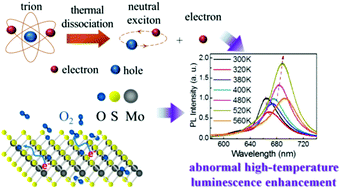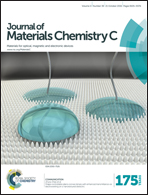Abnormal high-temperature luminescence enhancement observed in monolayer MoS2 flakes: thermo-driven transition from negatively charged trions to neutral excitons
Abstract
High-quality monolayer MoS2 flakes were synthesized by sulfurization of MoO3 powder on oxygen-plasma pretreated SiO2/Si substrates, and their optical properties were studied by temperature-dependent Raman and photoluminescence spectra in ambient air and nitrogen gas atmospheres. Abnormal enhancement of light emission is observed at elevated temperatures ranging from 380 to 520 K, which is in sharp contrast to the thermal quenching effect of luminescence commonly observed in traditional bulk materials. The studies reveal that this abnormal photoluminescence enhancement is attributed to the thermo-driven transition from negatively charged trions to neutral excitons at elevated temperatures. Two distinguishing mechanisms are verified to be responsible for the transition. Except for the “p-type doping” effect induced by the slight surface oxidation of MoS2, another novel mechanism, thermal self-dissociation of trions, is found to play a very important role in the abnormal luminescence enhancement. In addition, power-dependent photoluminescence spectra suggest that a relatively higher excitation power is in favor of improving the neutral exciton emission of MoS2 monolayers. Our results suggest that monolayer MoS2 may be a suitable luminescent material that can be used in atomic-scale light-emitting devices with relatively high working temperatures.


 Please wait while we load your content...
Please wait while we load your content...